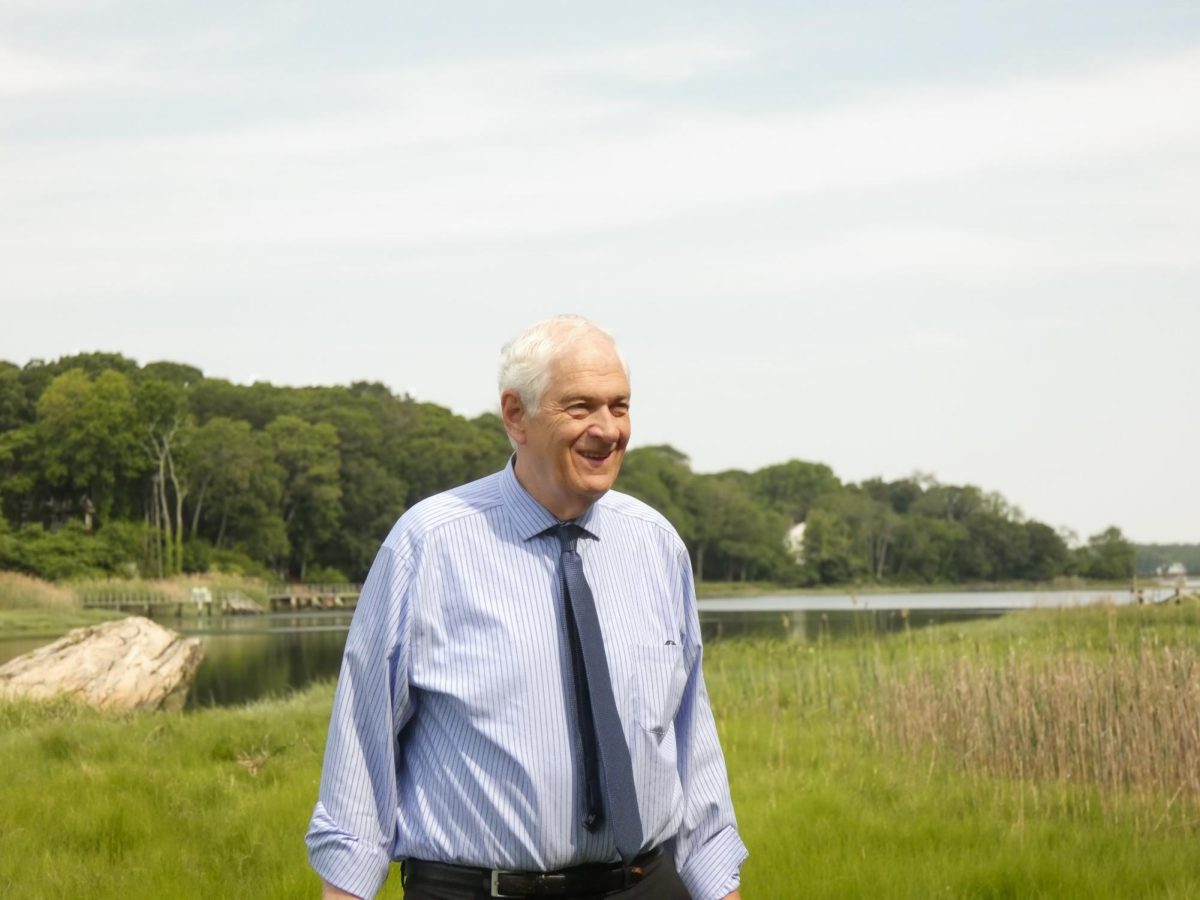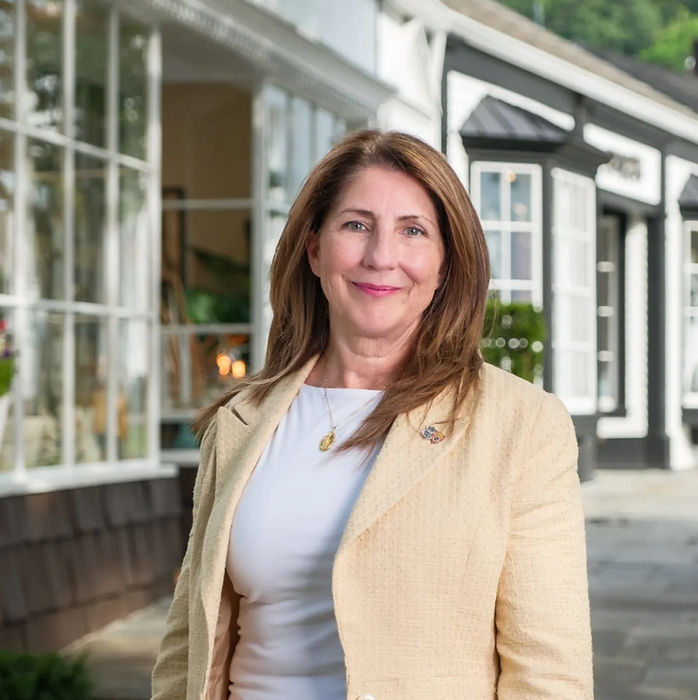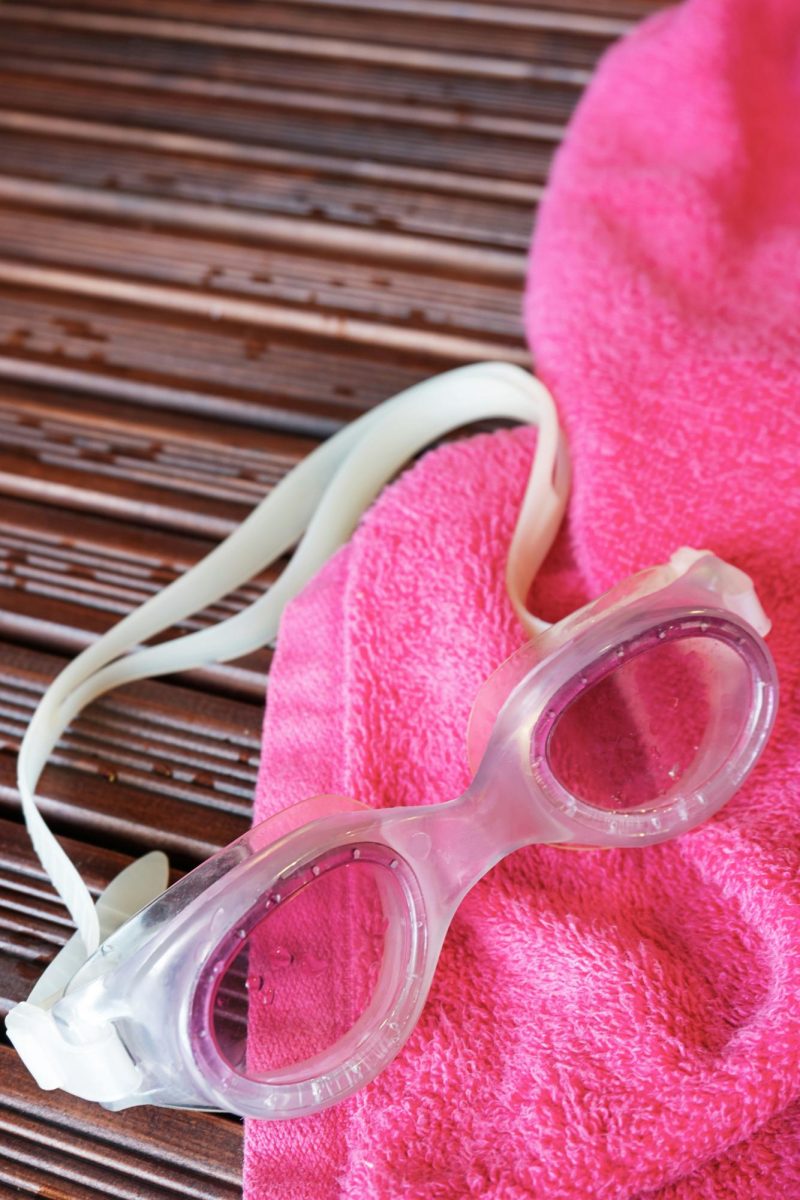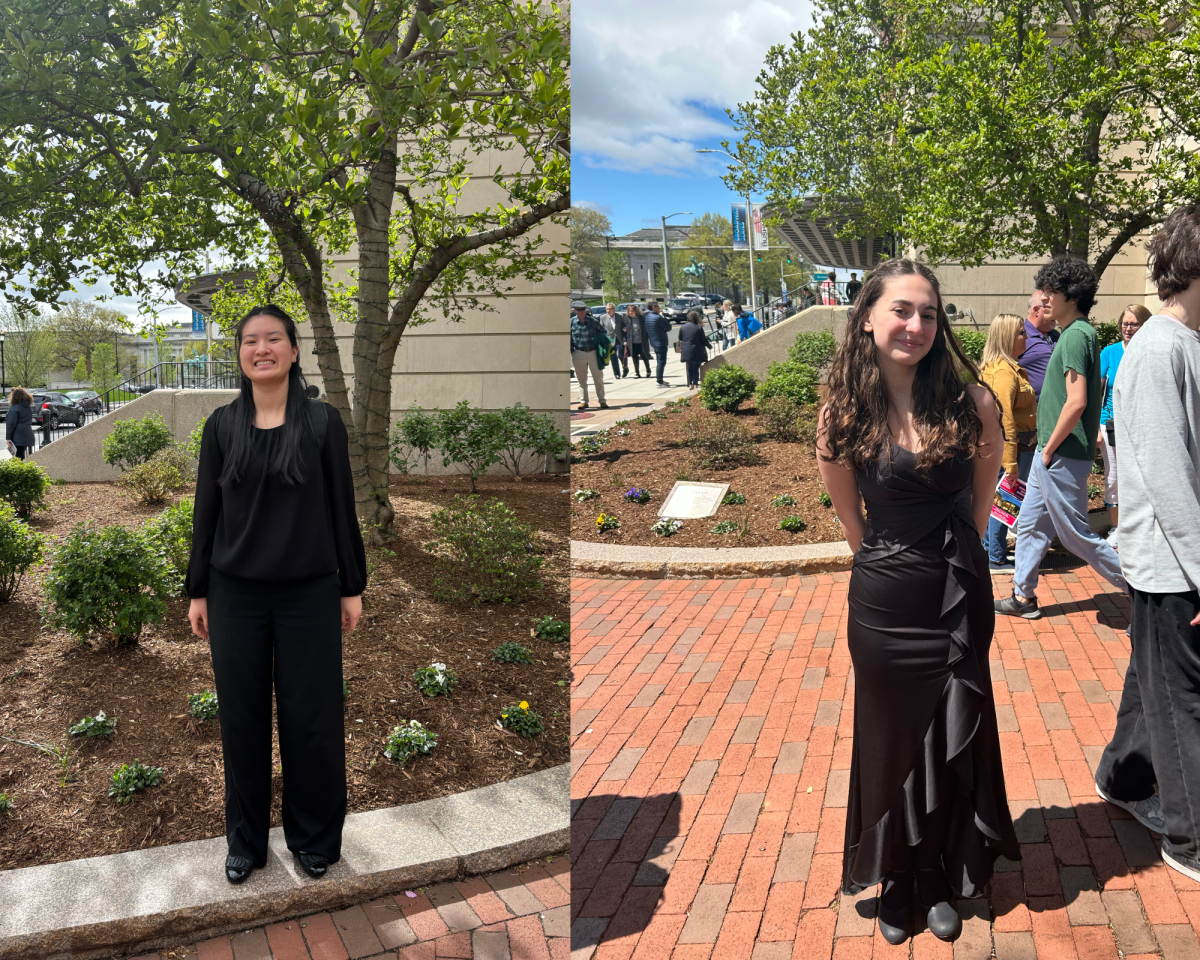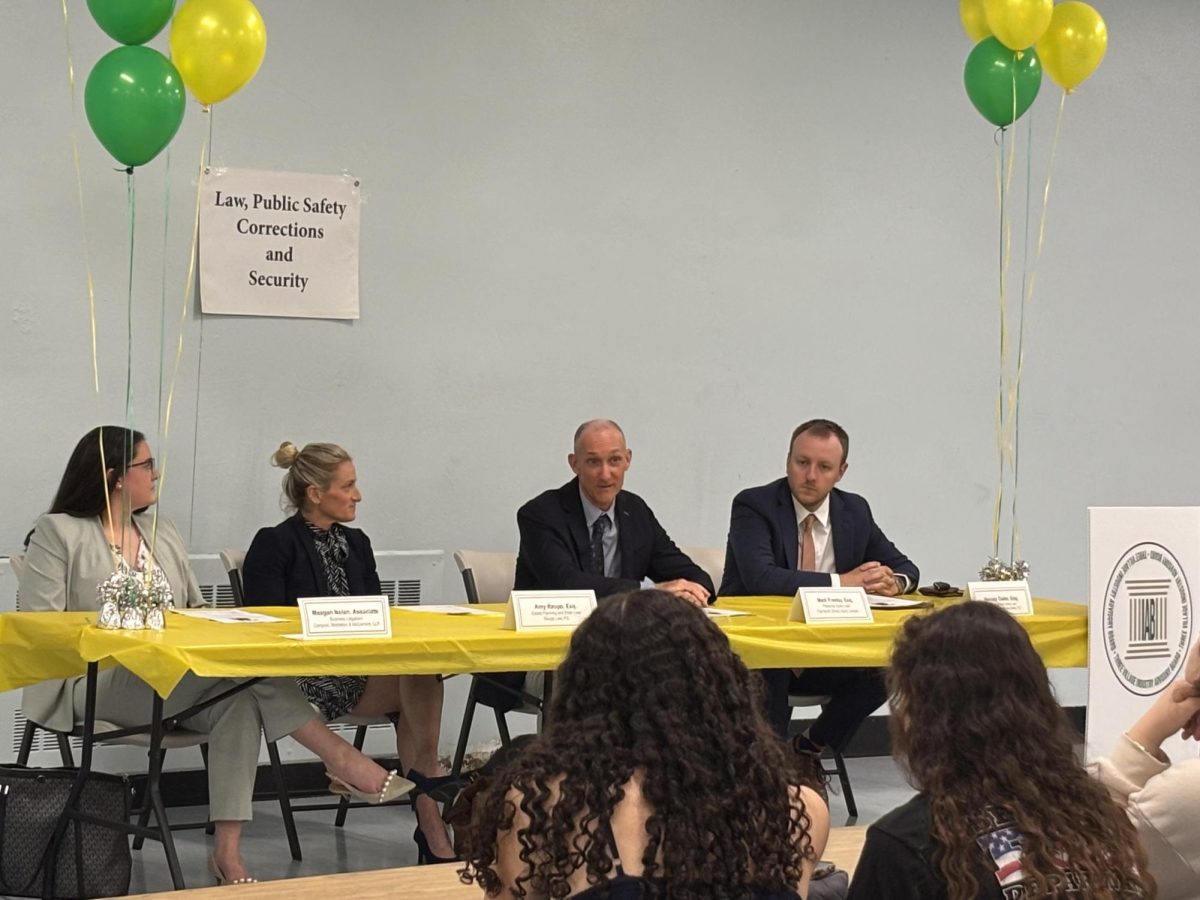Kaleidoscope sat down with Steven Englebright, the Democratic incumbent seeking a second consecutive term as Suffolk County Legislator in the 5th district, a seat he previously occupied from 1984 to 1992. From 1992 to 2022, he represented the Three Village area in the New York State Assembly. Below is the full interview, lightly edited for clarity.
Kaleidoscope: What accomplishments during your time as county legislator are you most proud of, and what else do you hope to accomplish during your term?
Steven Englebright: This is my second tour of duty as a county legislator. I began in 1983 when I was first running, so it’s been a while since I first became involved with the county. And this is a particularly important county. It’s one of the largest counties in the state and nation, and things that we do here set a tone for major policy.
When I was first in the county legislature, I was very interested in taking a concept to the next level. We have a sole source of drinking water in this county. That water is in the ground, and it is in the ground from precipitation. On an almost daily basis you see in the newspaper or in the media that another insult to that resource has taken place. An overturned tanker truck spills its guts, and it all goes down into the drinking water supply. Or cesspools. People being careless with photographic chemicals. It goes on endlessly. And I said, “Well, why are we not utilizing the same principles that are well understood in use for surface water watersheds for our groundwater watershed?”
I knew that the city of New York, for example, had its water supply from upstate sources. Also, I knew that it had, at one time, had a water supply from upper Manhattan and even lower Manhattan. And those water supplies became useless. They had to turn to outside sources, but there was surface water. So they dammed streams and created an impoundment backed up to have large reservoirs, and then they built water tunnels to bring the water. But I said, “Well, what are we doing here? Oh, we’re just hoping that we can keep the water clean. There’s got to be a better way.” So, how did New York City do it? In the 19th century, they used the tool of parkland. They started acquiring open land in the Catskills and in Westchester County and in Dutchess County, and setting it aside for park purposes and water protection. I said, “Well, why aren’t we doing that with water that’s in the ground?” People thought that was an interesting idea. And so, I tried the idea out on my students [at Stony Brook University]. I challenged my students to knock that idea down and they said, “No, we think it’s a good idea.” So, I said, “Well, okay,” and I ran for the county legislature in 1983, and was elected in 1984. And I pushed for the county parks system to be utilized to protect drinking water.
Fast forward — several public referendums later, we now have the second-largest county park system in the nation: 63,000 acres of parkland, much of it in the natural watershed known as the Pine Barrens. We’re racing every day to preserve more. And I think we will be number one soon. Los Angeles County has the largest, and they have 65,000 acres. We’re catching up.
This is the arc of the last half century. This is the dominant issue of the county. By the way, it continues to the present. I believe there are many things that we should do with this park system that we have. Starting with protecting drinking water, but extending it also into protecting our cultural heritage. We have over 200 built structures in the parks system. Many are on the National Register of Historic Places. And we have unique natural areas, not all of which are in a watershed for drinking water. Some are coastal areas. You can go just beyond the buildings that are here [in Port Jefferson] and you can see the two sand spits at the mountain. This harbor. They’re both county parks. And they are really important for protecting the heritage of Port Jefferson, Three Village, and the greater northern Brookhaven community.
What action has been taken to improve the water quality and so the property as prescribed by Prop 2 which was passed last year?
We have the voter authorization. By the way, when I was in the state assembly, I was the original prime sponsor of that, The King Water Referendum Initiative. And one of the reasons I’m running for re-election is because I have the privilege of serving on the advisory board that was put together to oversee the proper expenditure of that eighth of a penny of sales tax. I’m sitting on that board now and we’re formulating policy as recently as early this week. We have a board meeting and adopted a number of policy resolutions that will help guide the destiny of this county and the way that we’re going to use these voter-authorized dollars to protect the water resources of the county.
One of the things that we did at our Monday meeting this week was authorize a goal of 5,000 IA systems to be installed each year. IA means Innovative Alternative Cesspool, which is a somewhat expensive thing to do. The way we did in the past, we would build a new house, run a pipe to the backyard, and dig a hole. Sometimes we would elaborate a little bit, we’d plant grass on top. But I’m exaggerating to make a point. Really just, you know, when you do that, the human waste is carried down into the drinking water supply. And it’s rich in nitrates. Human urine in particular is especially rich in nitrates. Nitrate in excess is a severe contaminant. And when you have hundreds of thousands of cesspools then this really does become a public health issue. So, the IA systems are essentially miniature tertiary treatment systems. And I think an IA system is part of what was authorized by the public.
A little bit of background here. A sewer system and a sewage treatment plant in particular has different levels of completion regarding the removal of contaminants that are sent from human waste into water and carried into the treatment site. The most primitive is called primary treatment. That level of treatment is basically a screen that takes the floatables out. Secondary treatment is a treatment that moves suspended solids. It takes groundwater and makes it look like normal water, but you wouldn’t want to drink it. Tertiary treatment actually removes chemicals from the water. So, a tertiary treatment facility, if it’s working properly, will actually discharge treated sewage after it’s gone through the process of cleaning up that is pure enough to drink. So, when I say that an IA system is a miniature tertiary treatment facility, that means that we’re basically looking to convert cesspools into treatment centers that are much smaller in scale than a tertiary treatment facility that serves thousands and thousands of people — this might serve a single household. But the processes at work inside of that cesspool after it’s been innovatively altered are the same processes that are at work in a larger tertiary treatment facility. The work is done by bacteria. That’s the workforce.
Would the goal eventually be to get IA systems into every single household in the district?
In every single cesspool in the county. Then we would have achieved one of the primary goals of the Clean Water Referendum.
You mentioned that this is a more expensive treatment to the water quality issue. Given that, how long do you think it’s going to take to implement?
We set the goal this week to install 5,000 a year. You do the math. 5,000 into 300,000. 60 years. That’s pretty good. It took us 200 years to screw up the water system. So, if we can catch up in just 60, that’s not terrible. That’s not bad.
Now there’s another half to this, which is to upgrade actual sewer systems where the pipes don’t go through a cesspool, but rather go to a larger pipe which leads to a treatment facility. One of those, in fact the oldest such facility in all of Suffolk County, is here in Port Jefferson. I wish we could see the harbor from here. We can’t, but it’s over near the power plant. Those stacks loom over the adjacent property, which is County Sewer District 1. SD1 was a necessity.
I don’t know if you know, but the old name for Port Jefferson was Drowned Meadow, and it’s because it was a tidal salt marsh. It literally was made by tides twice a day until the population began to make demands of the harbor and create housing and industry here. And so, they brought sediment and sand, and placed it on top of the living marsh and then built houses on top of that. Sounds great until you try to use the toilet. And then the ground is so full of water already because the surface is dry, but just a couple of feet down, you hit the original level of the drowned meadow, which is sea level. So, even as we sit here, we’re just a couple of feet above sea level. And in the early part of the last century, there were buildings, ships here and the population was growing and the population was going to the bathroom, and the ground could not absorb the liquid. And it was going to the surface and there was a cholera epidemic. This was back around 1906.
So they had to do something, and they created a primary sewer treatment facility. This was good for several decades, and then they said we’ve got to upgrade it. And it continues to be upgraded. We have a resolution before the legislature right now to continue the improvement of SD-1. We’re trying to make it as close to a tertiary facility as possible. It’s an advanced secondary treatment facility today.
There’s a huge concern for voters right now for the cost of living, especially on Long Island and with the passage of the last budget vote. In particular, it makes it very hard for young families to establish themselves in this area and to remain community members. Do you have any plans to combat this?
The first thing you do is try to stop the bleeding, and to hold the line on taxes. The next thing is to try to use the taxes that you have in a way that allows for the possibility of reducing taxes. It’s also important to make some investments. Instead of just looking at tax revenues as a way to spend money, it should be looked at as a way to invest money. The public gives over money to the government with an expectation that there will be some wisdom applied in the way that those revenues are used.
I’m very focused on the cost of living aspect of this. I live here. The taxes are oppressive. The county taxes are the least of it, by the way. Most of the taxes are property taxes. The county’s main revenue stream is from sales tax. So, we’ve dedicated a portion of that sales tax revenue for the clean water initiative. That’s what we’ve been talking about. There are only two levels of government that have the revenue stream of sales tax. One is the state and the other is the county. The town and the school district are all depending upon revenue that is other than the sales tax.
The sales tax in this county is slightly less than many of the other counties in the state. We like to keep it that way. So when I say stop the bleeding, I mean stop the escalation of the taxes. That’s the first thing that is always on my mind. Hold down costs.
The population growth of this county has tapered off in recent years, and enrollment in Three Village is down significantly since its peak 15 years ago. Do you think these demographic changes are an issue for the county, and if so, what can we do about it?
We can’t pass laws that tell people that they have to be of a certain age to live here. So, I want to be clear. That’s not something you can write a piece of legislation to control. What you can do at the county level is support regional planning, which is a way of saying you can think before you act. The county planning department is a very important unit of the county. We have a Bi-County Regional Planning Board, where we joined with our sister county to the west, Nassau County. It’s probably one of the most important innovations in the history of Long Island, which is to create an expectation that we have municipal planning. And we’ve had really great planners here. We’ve been very fortunate.
One of the roles of the county legislator is to support that planning process at the county level. One of the things that we need to plan for is drinking water and using tools such as parkland acquisition to follow through on plans, as I’ve already described. One of the most important plans regarding water, for example, was in 1978 when a key study was conducted by the Suffolk County Planning Department and the Bi-County Regional Planning Agency to protect our drinking water by essentially doing an inventory of the water chemistry of the wells in both counties. They produced maps showing where the water is clean, where it’s partially contaminated, and where it’s severely contaminated. This was done with a federal grant under section 208 of the Federal Clean Drinking Water Act. And it became known as the 208 study.
The 208 study is still a guiding document that has interestingly defined what that study called hydrogeological zones. It mapped the boundaries of where the purest water was and where various other levels of contamination were. The study said that the cleanest water on Long Island was beneath Hydrogeological Zone III. And I looked at the map outline and I said, “I want to compare that to an aerial photo of the Pine Barrens.” And it was a one-to-one match. Eureka, where you didn’t have pollution sources, you still had clean water. And so, that has been an important part of helping to push forward the clean water initiatives that are so important.
More broadly, we have to have a sense of sustainability. I teach in the Department of Sustainability Studies at the University of Stony Brook. What we really should be planning for regionally is, I believe, an awareness that this is an island. It’s a big island, but it’s got limits. We’re surrounded by saltwater. And we really need to have a comprehensive vision of what we want this island to be like. I hope that through the processes of policymaking in the government, we can arrive at a sustainable island: that we’re not causing progressive incremental deterioration of our land, air, and water; that we are a part of the environment rather than a parasite upon it; that we are living in balance; and that we’re not causing progressive inevitable degradation. That’s a challenge, but it’s one of the things that the county can do. I am a strong supporter of the planning initiative of the county.
The Trump administration, whether through the One Big Beautiful Act or other actions, has cut many clean energy and environmental programs, many of which directly benefit the county and its natural areas. What is your response, and what can the county do to account for these changes?
We have to basically make sure that we do not lose our way in the manner that the federal government is now losing its way.
Last year the Avalon Park Preserve was destroyed by severe flooding. Are there any plans underway to help restore this historically and environmentally significant part of our community?
Yes, but it’s been painfully slow. It’s coming out of a year-long fog. Part of what is going on is that the affected public is really getting impatient and rightfully so. A year has gone by and what was Mill Pond is now growing weeds. That’s not good. To cut to the bottom line, there has been a lot of confusion as to what unit of government or private not-for-profit ownership should take responsibility for the repairs to the dam.
First, let’s understand what happened. There was a storm in Connecticut, which washed out 27 state highways in Connecticut. In Connecticut, it killed three people. One man was drowned in his car. It dropped, by some estimates, 15 inches of rain in six hours. And then that storm came across the Long Island Sound and slammed into the North Shore of Suffolk County. It wreaked havoc from Rocky Point all the way to Huntington. It dropped someplace between 10 and 11 inches of rain in about two hours in the dead of night on the 19th of August.
We had three historic dams with impoundments behind them who were tested that night. Two of the three dams failed. I think it’s important to realize one of them did not fail. Why? Why did it survive? All three of these dams are essentially earthen-core dams made of loose sand and silt. The one in Stony Brook failed. The one in the Blydenburgh Park in Smithtown failed. Both of those are pre-revolutionary dams. They’re old. The one in Stony Brook was built in 1751. The third dam that I want to point out is in the Frank Melville Park in Setauket. It did not fail. So, what happened? Was it that the volume of water was so great that it just swelled the pressure behind the earthen dams and caused the dam to essentially yield to the water pressure? That’s what a lot of people think. That’s not what happened. There’s enough mass to hold the water back.
What caused the dams to fail was the overtopping of the roads on top of the dams. When the water went over the top of the dam, it fell about 20 feet. That’s a waterfall. A waterfall onto soil will cause the soil to be stirred up, and the water becomes filled with sand grains. If the water keeps coming in the form of a waterfall long enough, it will wash those sand grains away. As it does so, it will cut backwards toward the source. The source is at the head of the stream. This is called headward erosion. Headward erosion then cut backwards through the dams, washing and removing them until there was not enough mass to hold back the water. So they burst. These are erosion events.
The reason this is important to understand is because, if we’re going to go about fixing it, we’ve got to know what we’re fixing. What we should do is go look at the dam that didn’t fail. It has an earthen core also. However, it didn’t fail. Why? Because on its seaward side, the side that the overflowing water fell against, it was stone. If you took these concrete pavers and put them on the surface of the seaward side of those two dams, the dams would not have failed because the mass of the dams would not have been removed. With Frank Melville Park, the falling water will just bounce off.
When we’re counting the jurisdictions, you’re going to run out of fingers here. The only jurisdiction that seemed not to be directly affected was the county. But we have the Town of Brookhaven, and we have Smithtown on the other side of the dam. Then we have the historic owner of the dam, which was the Ward Melville Heritage Organization. Much of this year has been trying to figure out who owns the dam, who built the road, who’s responsible.
As if all of this wasn’t enough, the water washed away part of the yard of a house, exposing part of the foundation and almost killing the people inside the house. Fortunately, they escaped with their lives, but their property has been severely damaged. The very first thing that that individual did was hire a lawyer and put everyone of the political jurisdictions on notice, including the Ward Melville Heritage Organization, that they were considering a lawsuit.
So what do you think all of those entities did? They got their lawyers. It basically froze everybody in place. A lot of the advice being given by the municipal lawyers was, “Don’t talk to anybody. You’re only setting yourself up for some adverse questioning if this goes into a court.” But how do you solve a problem if you’re not talking? This is a real problem.
The fellow with the damaged house basically is a victim. But a municipality may not gift public assets. It can utilize the public’s money on behalf of the public, but it cannot use the public’s money to benefit an individual. What we should be doing is finding a way to help make that gentleman whole financially. One way to do that would be to buy the property from him. Another way would be to acquire a right of way across a portion of his property in order to fix the dam. We can’t just make a gift, but we can work with him and the other affected jurisdictions. To his credit, that gentleman has released his initial lawyer and currently does not have a lawyer. We’re at a moment where we ought to be able to talk to one another again.
Within that context, the Town of Brookhaven has maintained the Harbor Road dam into at least the middle of the street, where the Brookhaven and Smithtown border is. The stream is the border between these municipal jurisdictions, which is one reason why this is so complicated. The Brookhaven Town Highway Department came in and looked at it and said,“ We don’t own the land, we have no rights or responsibility for anything other than the surface of the road.” The superintendent of highways has taken that position, and I think partly why he took that position is because of the threat of a lawsuit. Hopefully he will have the chance to reconsider.
I asked the commissioner of public works who runs the highway system for the county if there was ever a county road involvement in Old Stony Brook. I was told there never was. I said, “We looked up county roads and there was a missing number for 68. Where is Highway 68?” The commissioner said he didn’t know. Fast forward, I have a whole series of documents on my desk that someone acquired through a Freedom of Information Law request. County Road 68 was dedicated on January 27th of 1941. It went down Main Street, Stony Brook. The takings map included not only the right of way for the main trajectory of the road, but also an expansion into side roads at two intersections. Both of those intersections are in downtown Stony Brook, and one of them is the pathway across the dam.
So, last week, a mystery was cleared up: who built this road that goes across the dam? Was it part of a county project? Well, the takings map shows clearly that that was one of the two intersections that departed from the general trend of the road that was authorized in 1941. The map is from before they paved the road, showing that it was condemned. The words condemned are on the map. That changes things, because the parentage of the road is the county. Remember I said before, all these different entities should run out of fingers counted? I didn’t count the county. Nobody this whole year has been counting the county. Our current county executive, many, many months ago said, “I really care about what happens here; I’ll pledge to help if I can.” But there didn’t seem to be any county involvement. Well, we have documents now that may give the county exactly the opportunity to revisit this. Because the county built the road. The county used eminent domain to take the land and the right to build the road.
Later, the Town of Brookhaven requested that the road be transferred to the town, so that’s how it became a town road. But it was a county road for almost 40 years. But now nobody remembers it, because they took the signs down that said 68. Interestingly, if you go on Google, there’s a little 68 written in several places along the route of the old road. If you do the same thing for Nicolls Road, for example, a little 97 is written on Nichols Road. And if you click on it, you get an icon that pops up and says this is a county road. If you do it on 68, nothing happens. But they still have 68 written on it.
I could go on. There’s more about 68, but you’re getting the idea. We would like to get money from the federal emergency management agency—or FEMA. It requires a 25% local match. I hope they talk to somebody who’s a sedimentologist—I happen to be a sedimentologist—so you understand what really happened before you bring in the engineers who say “we should put in concrete and steel.” You know, the dam was there for more than 100 years. It did fine through the hurricane of ‘38. It did fine through the hurricane of 1945. It did fine when there was a big storm that had no name about 20 years ago on the campus of Stony Brook University that sent so much water over to that part of around 25A next to the railroad station that it filled the sump and washed away the sediment underneath the tracks. Fortunately, one of the one of the prominent members of the Setauket Fire Department saw that the tracks were dangling in the air, because the embankment of loose sediment had been washed away, and he put a call in and they stopped the train. Otherwise, we would have had many, many people killed. The train would have run off because the tracks washed away. So where did the water that spilled out of that go? It went down 25A and went down into the Mill Pond. Well, the dam survived that. Okay?
So let me just give you a perspective. What happened on the 19th of August was not the first time that the dam had been tested by nature. There had been other severe tests. So I think for the gentleman who’s going to try to put all of his eggs in the basket of pushing blame on somebody who owns the dam and make the case that this is negligence, that’s going to be a heavy lift. I would like for him to be made whole.
What I hope is that we buy the property from him, and then we repair that house. That house was built in 1940 and 1941, and it sets the tone for the colonial village of old Stony Brook. We should not allow it, if possible, to fall into the creek or be destroyed. We should respect the important aesthetic role that that house plays for setting the colonial theme of the village. That’s a public purpose, isn’t it? And if we acquired it, we should make it a park property. See the tool of parkland at work here again. Then we can turn it into a long-term lease with, I hope, a consortium of the not-for-profits. We have several museums in old Stony Brook. The Jazz Loft, for example, where you have jazz musicians from all over the nation coming to play for special events. Why not have a place to put them up for the night? And the other museums in Stony Brook could use it too. By doing that, we can take the threat of a lawsuit pretty much off the table and enable people to start to talk to one another and do some problem solving.
In the upcoming school year, New York has enacted a statewide phone ban for all students during all periods. What are your thoughts on how it will impact students both in and out of an academic context?
When I went to school, we didn’t have phones. I lived through the experience. I gained from not having to have phones competing for my attention. I’m old fashioned, so I think banning phones, unless it’s an emergency, is good. I don’t think phones should be in use competing with the instructional activities of the class. I say that from having graduated from high school myself.
To follow up, many parents and students have expressed concerns over not being able to reach out to each other throughout the school day, especially in cases of emergencies. Do you anticipate this being a safety concern, and how do you plan to address the objections to community members?
Here’s my phone. You can take this little button here and set it to red. And it will not ring unless you have previously authorized one or two people to make it ring in the case of an emergency. I have to use this when I am in the legislative auditorium, because you don’t want the phone to ring while somebody is offering testimony or you’re trying to speak through your colleagues. There’s only one person who I have authorized to be able to break through, and it’s for that very reason. It’s my wife. If there’s an emergency, it will ring. And that’s how it should be done. The phones allow for that. So I don’t see this as an intractable problem.
I’m not talking about banning the ability to have one of these on your person. I’m saying that the phone should not be allowed to be in use unless there’s an emergency.
Currently, Three Village’s policy is not to remove phones from students. It’s just to entrust that they will not use them, or there will be more severe or strict punishments in place. But other school districts in our state and across the country have implemented measures to actually prevent students from being able to physically access their phone, like taking them away or putting them in secure, non-accessible, pouches. How do you feel about that?
Two reactions. I know that the state legislature has acted on this. I haven’t had a chance to actually read the bill, so I don’t know whether or not it bans possession of the phone. But there is a new statewide law that I think we should refer to to see what they did in Albany this year.
The second reaction is just my own thoughts. The whole purpose of school is to prepare young people to take the baton and run the next leg in this relay race called life. Part of that is to work within reasonable expectations and rules, because that’s what society is. You want these young people to be citizens who are responsible. If you want them to be responsible, you should trust them to be able to hold their telephone and not take it away. If the goal is to create good citizens—and that I believe is the ultimate goal of public education—then there has to be some awareness on the part of the adults that opportunities to practice restraint on the part of young people is, in many cases, more important than simply telling them, “this is how it’s going to be, and it’s my way or the highway.” That’s not how you make a good citizen. You make a good citizen by saying, “We’re in this together. I’m the teacher. I want to share information with you. I want to trust you not to disturb the class unless there’s an emergency. If there’s an emergency, then of course you should have your phone set so that it should ring. If it’s one of your parents or somebody important, your doctor or something.” But if you entrust students with a sense of responsibility, that is part of the citizenship training that is the real goal of public education.
What are your thoughts about AI, especially as it becomes more popular and widespread?
I’m still cautious about AI. I know it’s fascinating. I have a certain caution in my mind though, because it is a machine. It is thereby a tool, and with any tool, it can be used properly or can it be abused. Again, we go back to what education is all about. It’s not about machine learning. It’s all about whether, at the end of the graduation process, you have a good citizen who can make a contribution, who has a sense of self that is built on a sense of strong self-esteem and understands boundaries of social etiquette. All of those things are difficult to quantify, but all of those things should be the goal. If AI is a tool that can assist in creating that kind of a graduate, I’m all for it. On the other hand, if it is a substitute for learned behavior that makes a good citizen, that’s an abuse.
Your opponent, Laura Endres, is running largely on a public safety platform. The county budget is also largely focused on issues of public safety and law enforcement. What have you done and what will you do to address these issues?
I believe that more than 70% of the county budget is [allocated] for public safety. This is a very important part of what the county does. I’m very pleased that I have received the endorsement of all of the police unions. That is a validation that I’m very proud of. I know my opponent is married to a police officer. That’s great, but I have never seen my opponent take a public position on any issue at all, let alone public safety issues. I think that the endorsements indicate that the police unions—from the Summit County Correction Offices Association, to the Summit County Police Benevolent Association, to the Superior Offices Association—have all endorsed me. Take a look at my record: I have a 100% affirmative voting record for the resolutions that have come before the Committee on Public Safety, of which I am a member.
I believe in our Suffolk Police. Most of them live amongst us. They are our neighbors. When you speak of the county police you’re usually talking about, I think it’s important to get a warm feeling or a positive association when you say “policeman.”
I am troubled that we now have people abusing police powers. These are federal employees that are using police powers very differently. When you say police officer, that’s a person with a badge. The badge has a number. That is accountability, and because of accountability there is trust and a sense of confidence that the police power is not going to be abused. That is not what we see with some of what’s going on now in the use of police power at the federal level. There are people who do not have any identification. They’re not in police cars that have a sign on the door that says “this is a police car.” They use masks. There’s no accountability, and that is really troubling. That’s damaging, especially for the trust. If that doesn’t get reined in, the appropriate use of police power will be compromised.
This should be something that we’re aware of now. This is pretty new, it’s just in the last half a year that we’ve seen this. [The Trump administration] said this was something for the worst of the worst, murderers and violent criminals. As of yesterday, it’s kind of a mixed bag. They arrested a seven-year-old girl. It’s beyond unnecessary: it’s harmful. It has the potential to erode our trust in the use of any police powers, and we need those police powers to protect our loved ones and our property. I think rather than imitating the totalitarian government style of use of police power, the federal government should more closely imitate the Suffolk County police and the tradition of restrained, disciplined, and cautious use of that power.
Local elections often deal with very low turnouts, even below 25%. How do you think political participation could be increased, especially among young people?
I think it has to do with education. Going back to information transfer, young people are the future. They can only influence that future if they participate, if they believe in themselves enough to believe that they matter and that they should vote. If you don’t vote, you deal yourself out. But how do you get people to realize that? I think we have to depend upon organizations such as the League of Women Voters and all of the environmental organizations to clarify to young people—and all people who are of voting age—that they have a stake in local elections that is really quite significant. That’s how to get them to come out. They have to know that they matter. Even on the national level, people matter.
How has the political landscape changed throughout your 40 years in this field, and what has motivated your involvement—whether it’s because of or in spite of these changes?
It’s certainly in spite of some of these changes. I’m a scientist and a geologist by training, and I really believe that the environment is the mother of us all. If we take care of our mother, we’ll all be okay. So I’m very simple-minded about things like this. Strive for sustainability, reasoned decision-making, and the involvement of as many people as possible. You don’t get that unless you stay involved, so I’ve been involved.
I’ve made a difference over time. I was national environmental legislator of the year three years ago. I was the prime sponsor of two constitutional amendments that have passed in New York State. One provides a constitutional guarantee to the right to clean air, clean water, and a healthy environment. I was the prime sponsor of the Solar Choice Act and the Solar Net Metering Act. The Solar Net Meteoring Act provides that every customer class is eligible for net metering. So I’m very engaged with this. I was the first sponsor of legislation in the country to try to rein in excess plastics. The Suffolk County Plastics Act was an Englebright bill in my first tour of duty in the county legislature. I mentioned before that the county legislature is an important forum, that’s an example. We haven’t solved the problem, it’s only gotten worse, but at least people are now talking about the ill effects of plastics in the environment. You have plastics in the human bloodstream now. It’s really a serious problem. I could go on, but I feel like I make a difference.
Under the One Big Beautiful Bill Act, millions of New Yorkers have had their Medicaid insurance cut or reduced. In addition, citizens have been affected by reductions to food stamps and assistance programs. Is there anything you and the Suffolk County Legislature can do to ensure the well-being of county voters who have been impacted by this bill?
I sure hope so, but I’m not yet perfectly clear on what deficiencies we’re going to be dealing with. I can tell you that the mission of the county is in the realm of policy relating to health and safety. Part of health is to make sure that people have shelter and food. There will no doubt be some clarification going forward as to what impact the foolishness—sorry, but I think a lot of what has happened this year at the national level is very foolish—will have. I hope to be working with my colleagues, to join together to fill some of the gaps that are being created by short-sightedness at the federal level.
Any other comments about the Trump administration and the effects of its actions on the country?
It’s very important to vote. The midterm elections are really going to be important. Young people are being victimized by many of these policies, both here and internationally. I am deeply grieved to wake up every morning and see the latest report of starving children and realize that tons of food that was purchased for distribution to third world countries is rotting because they fired—gleefully fired—the people in USAID. That’s crazy. That’s just really, really unfortunate. To watch the news is to just be in a state of disbelief sometimes lately. The antidote to that is the midterm elections. People need to be informed and understand what’s really at stake for them and their families, and to vote. Sitting out the election is helping to make the problem worse.
Lastly, are there any other important issues that you’re looking to take action on, and if so, how will you gain voter support on these issues?
There are many other issues I’m keenly focused on. We live in a remarkable community with an amazing history, so one of the things I’m very keenly interested in is historic preservation. Tied into that, of course, is public education. Once again, it’s part of our built heritage to protect and preserve important historic structures and historic landscapes. I could go on for several hours, but I would cause your eyes to glaze over. But I’m very focused on making sure that we do not lose a sense of place as we go forward. We have to have a very strong sense of how we got here. The outreach for all of this is the same: talk about it.



